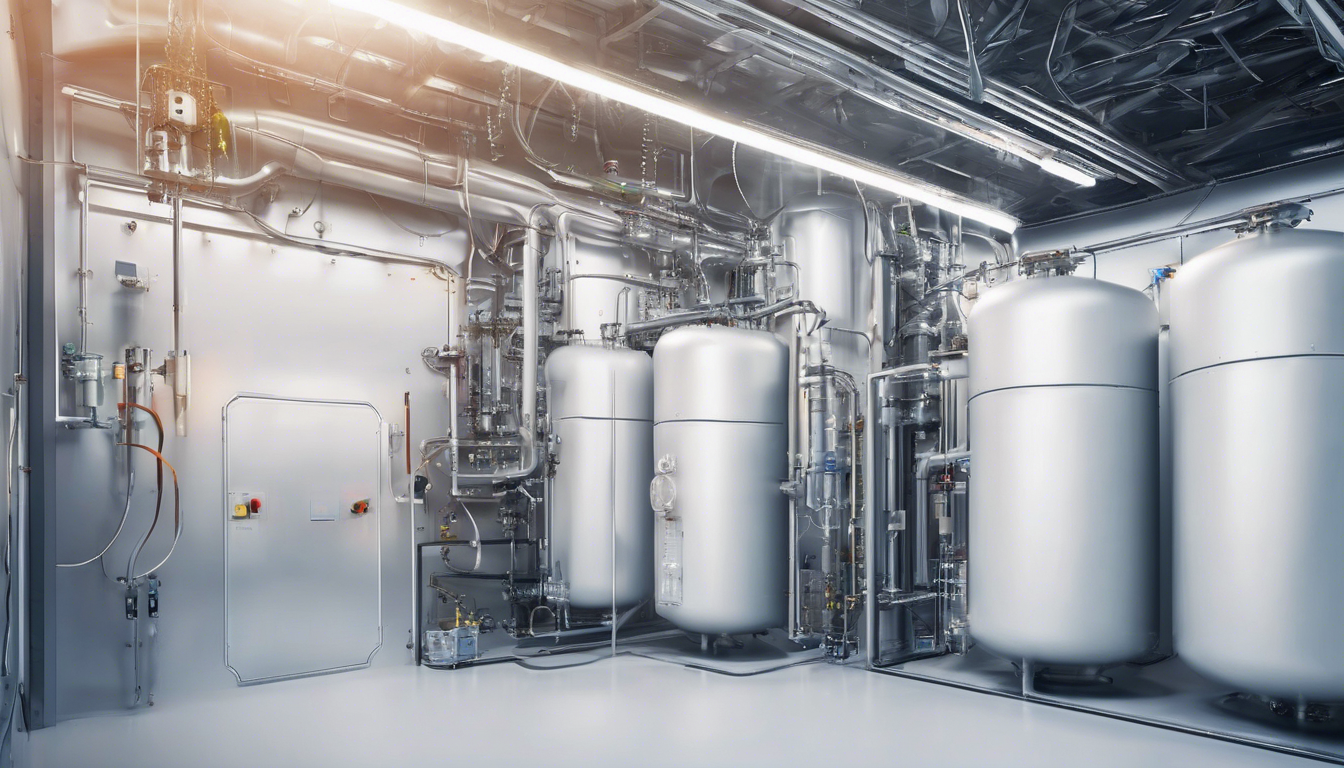Innovative hydrogen storage technologies are key to realizing a sustainable energy future. As industries seek cleaner alternatives to fossil fuels, efficient hydrogen storage solutions emerge as vital tools. From compressed gas and cryogenic options to solid-state methods, each technique presents unique advantages and challenges. This exploration highlights cutting-edge advancements and their pivotal role in transforming hydrogen energy applications across transportation and power generation. Unlocking these innovations could reshape our energy landscape.
Understanding Hydrogen Storage Technologies
Hydrogen’s low volumetric energy density poses a significant challenge for its storage, necessitating innovative and efficient methods to support industries reliant on this clean energy source. You can explore more about the advancements in hydrogen storage systems, such as the Delphy solution, on this detailed page: https://www.vallourec.com/news/vallourec-revolutionizes-hydrogen-storage-with-delphy-its-large-scale-vertical-solution/.
In the same genre : What are the best ways for UK companies to manage their brand reputation online?
Comparing Storage Methods
There are three primary methods of storing hydrogen: compressed gas, cryogenic liquid, and cryo-compressed storage. Compressed gas storage involves high-pressure tanks, typically ranging from 35 to 700 bar, offering widespread use but requiring substantial tank volumes. Cryogenic liquid storage cools hydrogen to -253°C, making it denser but demanding expensive ultra-cold storage systems. Cryo-compressed methods combine these techniques, storing at similar temperatures with pressures around 35 bar, though “boil-off” remains a challenge.
Safety and Practicality
Safety is paramount due to hydrogen’s flammability when mixed with air. Advanced leak detection systems, strong tank materials, and proper ventilation are essential design elements. These features address risks and maximize the practicality of storage solutions for both industrial use and fuel-cell vehicles.
Also to discover : What are the key components of a successful business plan for a UK company?
Advancements in Hydrogen Storage Technologies
Innovations in Compressed Hydrogen Storage Systems
Compressed hydrogen storage remains central to utilizing hydrogen for fuel-cell vehicles and industrial applications. Typically, specialized hydrogen tanks store compressed hydrogen at pressures between 350 to 700 bar, striking a delicate balance between storage capacity and safety. Materials like type IV carbon-composite enable these tanks to handle such high pressures, making them lighter and durable for vehicular use. Despite these advances, the low volumetric energy density of compressed hydrogen poses design and cost-efficiency challenges, particularly for large-scale deployment.
Development of Liquid Hydrogen Storage Techniques
Storing hydrogen in its liquid form enables higher energy density compared to compressed gas, making it a compelling choice for sectors like aerospace. Achieving this state requires cryogenic cooling to -253°C, maintaining extremely low pressures within insulated tanks. Liquid hydrogen is increasingly utilized in industrial hydrogen hubs and emerging energy storage systems. However, the process consumes 30-40% of hydrogen’s total energy content, creating economic and energy efficiency hurdles.
Emerging Solid-State Hydrogen Storage Solutions
Metal hydrides and other solid-state technologies provide promising alternatives by chemically binding hydrogen. Materials like sodium borohydride can store hydrogen with high density, though releasing it requires elevated temperatures or catalysts. These innovations hold potential for safer, compact storage but require further research to enhance performance and affordability.
Applications and Challenges of Hydrogen Storage
Role of Hydrogen Storage in Renewable Energy Integration
Hydrogen storage is pivotal in balancing grid energy, especially as renewable sources like solar and wind fluctuate. Excess energy generated during peak production is converted to hydrogen through electrolysis and stored in compressed hydrogen storage systems or liquid hydrogen storage tanks, ready for reconversion to electricity when demand surges. This approach mitigates the problem of energy intermittency that renewable technologies face, making hydrogen energy storage technologies indispensable in stabilizing grid operations.
Market Trends and Regulatory Considerations
Rising interest in hydrogen has spurred innovation in hydrogen energy and automotive technology, alongside regulatory measures. Guidelines focus heavily on hydrogen storage safety—emphasizing robust materials, pressure controls, and leak detection within storage methods. Industrial adoption benefits greatly from policies aimed at decarbonization, further impacting hydrogen energy integration examples in diverse sectors. Economically, the focus remains on reducing the costs linked to liquid hydrogen storage techniques while expanding modular compressed hydrogen storage systems.
Case Studies Showcasing Practical Applications
The automotive sector exemplifies the advantages of hydrogen storage for fuel cell vehicles, with compressed tanks enabling emission-free driving. Cutting-edge projects like salt cavern underground hydrogen storage for renewable integration also facilitate vast storage capacities. Notably, the Delphy system by Vallourec highlights how modular hydrogen storage designs can efficiently serve industrial demands while optimizing space and safety.











